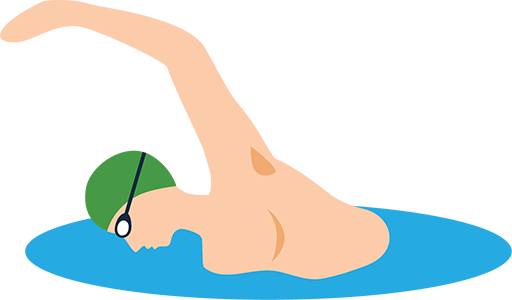Recreational Water Quality
Harmful Algal Blooms
Report A Bloom
If you think you’ve seen a harmful algal bloom, call the 24 hour UDEQ Spill Line: (801) 536-4123
Health Concerns
If you think you are may be experiencing symptoms from exposure to a bloom call your healthcare provider or call or call the Utah Poison Control Center: (800) 222-1222.
If you think your animal may be experiencing symptoms, contact your veterinarian.
Health Information and Symptoms
Most types of blue-green algae have the ability to produce toxins that can be classified into two major types: hepatotoxins and neurotoxins. Hepatotoxins affect the liver; blue-green algae hepatotoxins include microcystin, nodularin, and cylindrospermopsin. These toxins cause symptoms such as nausea, vomiting, and acute liver failure. In general, symptoms will appear rapidly following exposure to high amounts of hepatotoxins, but may take several days in the case of more moderate exposure.
Neurotoxins affect the nervous system; blue-green algae neurotoxins include anatoxin-a, anatoxin-a(s), and saxitoxin. Animals or humans who ingest these toxins may develop muscle cramps, twitching, paralysis, and cardiac or respiratory failure. Symptoms can occur within an hour of exposure, but may take as long as 36 hours to develop.
Though the most serious health effects of harmful algal blooms are due to the toxins, skin irritation and rashes may also result from contact with blue-green algae even in the absence of toxins. Like many types of bacteria, the outer layers of the cells themselves can have compounds that cause these symptoms.
When present in high numbers in recreational waters, blue-green algae can cause eye, ear, and skin irritation. Gastrointestinal symptoms such as vomiting and diarrhea can also result from exposure to blue-green algae. Animals such as dogs and cattle may become sick from eating the blue-green algae surface scum. Exposure to harmful algal blooms can cause a variety of health effects, from relatively mild to potentially serious. The symptoms people experience depends on many factors, including the amount of toxins/cyanobacteria, the type of toxin/cyanobacteria, the type of exposure, and the length of exposure.
No human deaths in the United States have been caused by cyanotoxins; however, pet, livestock, and wildlife deaths caused by cyanotoxins have been reported throughout the United States and the world.
Exposure Routes
3 Routes of Exposure:


Human Symptoms
Ingestion can cause
- Nausea
- Headaches
- Neurological symptoms
- Muscle cramps
- Kidney damage
- Liver damage
Inhalation can cause
- Nose irritation
- Sore throat
- Coughing
- Difficulty breathing
Direct skin contact can cause
- Eye irritation
- Rash
- Hives
- Blisters or Sores
Animal Symptoms
- Weakness
- Fatigue
- Excessive salivation or drooling
- Staggering
- Difficulty breathing
- Vomiting
- Convulsions
- Liver damage or failure
- Death
Ways to Protect Yourself
- Don’t swallow water when swimming.
- Wash hands with clean water before eating or preparing food.
- Clean fish well and discard the guts.
- Keep animals away.
- Recognize the signs of a bloom, and when in doubt, stay out.
Take time before play time; check water conditions on DEQ’s Recreational Advisory Map before you leave home.
Additional Resources
Additional resources including resources for clinicians, animals (pets and livestock), and ways to protect yourself are included in the links below.
Waterborne Pathogens
What is a waterborne illness?
Recreational water illnesses (RWIs) are caused by waterborne pathogens (bacteria, viruses, parasites) found in untreated waters in which we swim or play. These germs can cause diarrhea, vomiting, cramps, fever, and rashes. You can get a recreational waterborne illness if you swallow, have contact with, or breathe mists or aerosols from contaminated water.
DEQ’s Waterborne Pathogens website for more information.